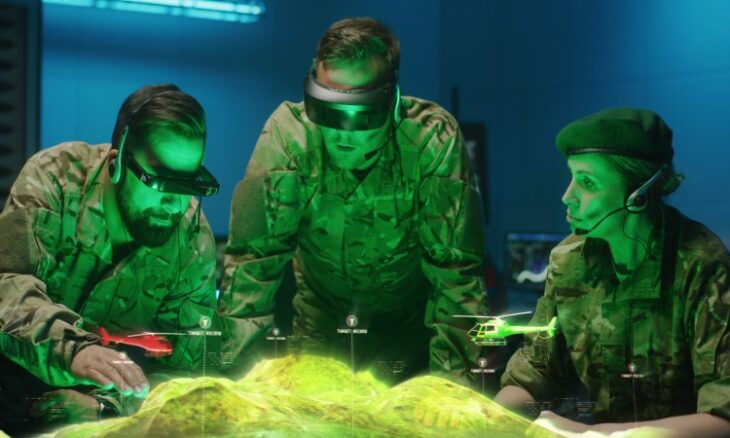US Air Force to deploy AR tech in F-16 cockpits
The United States Air Force is preparing to introduce a new augmented reality system into a number of its operational Lockheed Martin F-16 fighters. The technology, developed by Florida-based start-up Red 6, involves a helmet-mounted system capable of projecting imagery directly onto a pilot’s visor. This projection can replicate the presence of other aircraft, training partners, or complex environmental conditions, offering a more immersive experience than conventional simulators.
The Airborne Tactical Augmented Reality System, known as ATARS, has been designed to enhance the effectiveness of combat training. By merging the controlled environment of simulation with the demands of live cockpit flying, the system seeks to provide fighter pilots with highly realistic scenarios in real time. Red 6 confirmed on 15 August that it had secured a contract from the Air Combat Command to deploy ATARS within the F-16 fleet.
Founded in 2018 by former Lockheed Martin F-22 pilot Daniel Robinson, Red 6 has spent the past seven years refining the technology. Initially viewed as a concept more suited to science fiction, augmented reality of this kind has become increasingly feasible with advances in industrial components. Improvements in hyper-wide field-of-view lenses and curved display screens allowed the company to concentrate heavily on software development, which proved critical to the success of ATARS.
Red 6 has already achieved notable progress prior to the latest deal. The system has been integrated into the United States Air Force’s Northrop T-38C trainers and tested in the United Kingdom’s Royal Air Force BAE Systems Hawk trainers. Additionally, Lockheed Martin has invested in the start-up, while Boeing has partnered with the company to explore ATARS deployment on the T-7A Red Hawk, which is set to serve as the USAF’s upcoming training aircraft. The system has also been adapted for use on the Lockheed Martin MC-130J, a special operations transport aircraft.
In July, Red 6 was selected as a partner in Northrop Grumman’s Beacon project, an initiative focused on trialling innovative technologies related to autonomous aviation. These collaborations illustrate the growing interest across the aerospace industry in applying augmented reality systems to operational and training environments.
The recent Air Combat Command agreement represents the first instance of ATARS being fielded to active-duty fighter units. The command oversees combat squadrons and frontline operations globally, making the decision an important milestone for Red 6. The USAF currently operates roughly 700 single-seat F-16Cs alongside about 130 dual-seat F-16Ds used for advanced flight instruction. Although the company has not revealed the number of aircraft covered under the August contract, the move signals a broad commitment to embedding the system in the fighter fleet.
Imagery released to FlightGlobal shows the range of scenarios pilots can experience through ATARS, including visualisations of stealth aircraft in formation and an aircraft carrier as seen during a landing approach. The visor is also capable of replicating environmental challenges, such as rotorwash brownout faced by helicopter pilots or coordination with unmanned collaborative aircraft currently in development.
The F-16 contract marks only the beginning of Red 6’s ambitions. The company has highlighted the unique ability of ATARS to recreate the cognitive demands faced by fighter pilots in complex combat situations. With the system already demonstrating versatility across multiple aircraft platforms and receiving backing from major aerospace firms, the integration into operational F-16 units points to a future where augmented reality could become a standard feature in military aviation.










